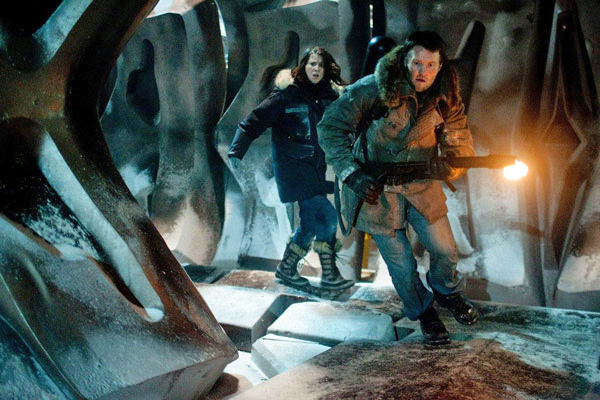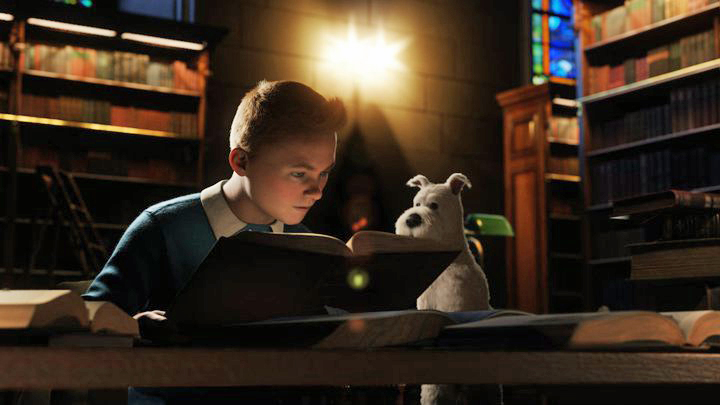Q. Why don’t more movies offer us “credit cookies” over the closing credits to munch on? Out-takes, party scenes, blown dialog, scenery, something! They have a choice between blackness and something; why not use the more entertaining something? (Steven D. Souza, Honolulu)
A. Credit cookies, those bonus scenes over the end titles, are appropriate for some movies but not for others. “Dead Man Walking” would hardly be improved by out-takes of Sean Penn giggling in the death chamber. Mary Jo Kaplin of the CompuServe Showbiz Forum says TV networks, fretting that viewers will start surfing during lengthy credits, are starting to require Credit Cookies–or even previews for their upcoming shows!
Q. The “Up” documentary series, which visits the same group of people every seven years, must be about ready for another installment, since “35 Up” came out in 1991. Any news? (Harris Allsworth, Chicago)
A. Director Michael Apted, who has directed all but the very first in this series, has revisited his usual subjects. “42 Up” will play in Britain this summer, and open in the U.S. in the autumn.
Q. This involves the Answer Man exchange about the order in “Titanic” for the ship to turn “hard to starboard” when an iceberg was sighted off the “starboard bow.” A large ship actually turns from the stern as a result of rudder action. The order to turn to starboard would cause the Titanic’s hull to move to port, thereby reducing the effect of the starboard side of the hull raking the iceberg. The vessel probably would have taken a glancing blow on the starboard bow, limiting the damage to a few forward watertight compartments. Apparently, the “hard to starboard” command was followed by an order to “back full,” which reduced the turning effect of the rudder, resulting in fatal damage. The operation of a “tiller” on a small sailboat has nothing to do with the order given to turn the Titanic to starboard, which was the correct order. (Cdr. Roy E. Nichols (Ret), U.S. Coast Guard, Reno, Nev.)
A. Thanks. I’ve had so many letters on this I feel like I’m taking a correspondence course in ship steering.
Q. Since film travels at 24 frames per second and video travels at 30 frames per second, how do they put computer generated effects on films such as “Twister” and “Titanic?” If movie film is transferred to video first before computer effects are done, is it then transferred back to film where there would almost certainly be a generation loss of some kind? (David Innes, Hammond, IN)
A. I asked cinematographer Steven Poster, editor of American Cinematographer magazine, to reply. He writes:
“The system for utilizing computer-generated effects in movies doesn’t use video at all. What happens is that the original film elements (like backgrounds or foreground actors) are “scanned into a digital medium with a laser scanner frame by frame. Once these images exist as digital information, they are manipulated and enhanced and then combined with the computer-generated parts of the images. This way many different layers of information can be combined into each frame of the movie. Once the work has been done in the digital environment, the images are transferred back to film frame by frame with a laser film recorder. Because the work is frame by frame, the original film speed is not a factor. And the quality is very close to that of the original film. One of the important advantages of this is that the cinematographer has much more control to manipulate and correct the images. My first use of these techniques was on a movie called “Cemetery Club. I had to correct a problem where inadvertently there was a piece of equipment left in the shot. I was able to completely remove this piece of aluminum pipe from the shot without a trace.”
Q. I’m writing about the young actor Robert Francis, who played the arrogant, inexperienced Ensign Willie Keith in “The Caine Mutiny” (1954), with Humphrey Bogart. He seems perfectly awful in the role and I wonder why he even got it. (Randi Von Ellefson, Chicago)
A. Robert Francis made five films in 1954 and 1955 and then died in a plane crash. It’s time to let up on him now.











